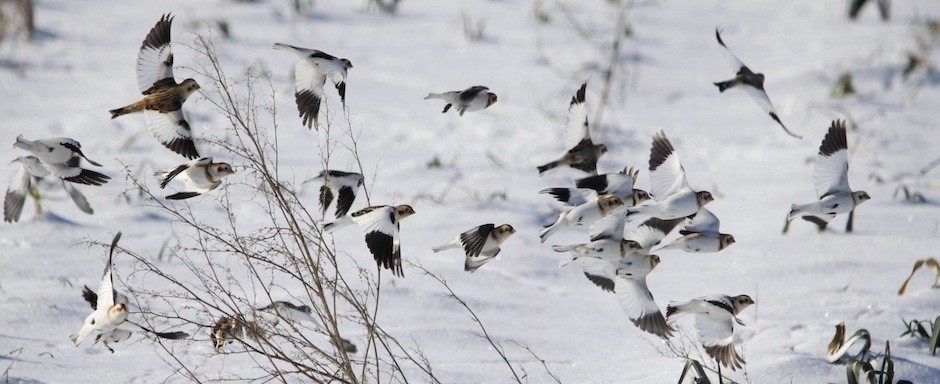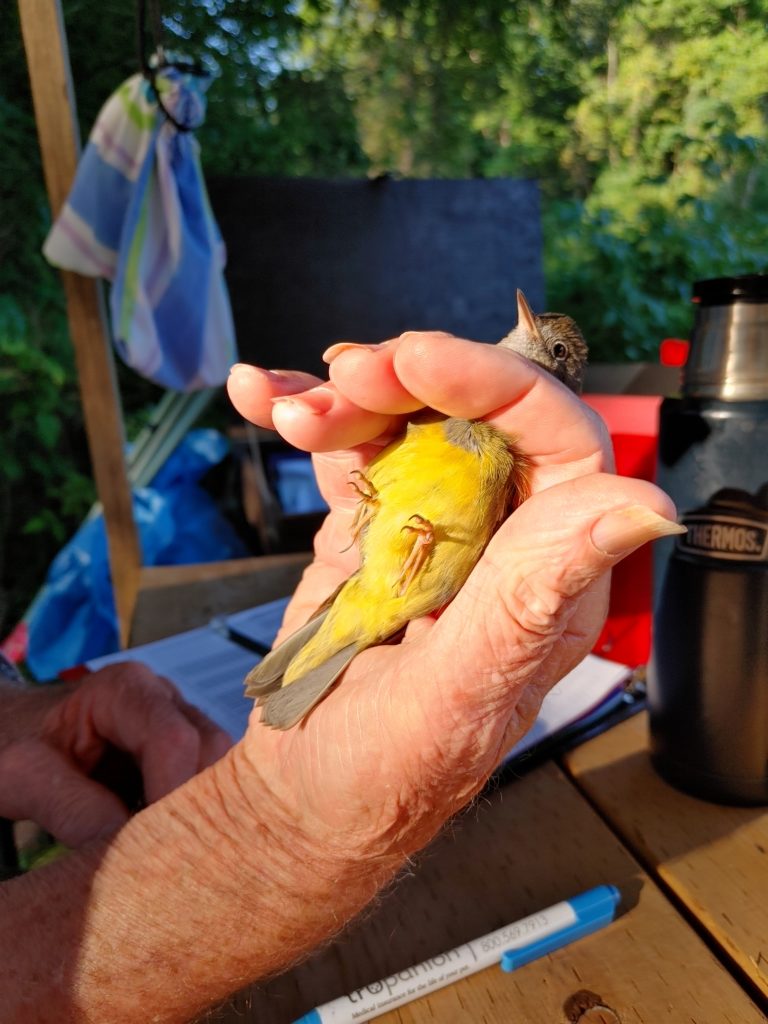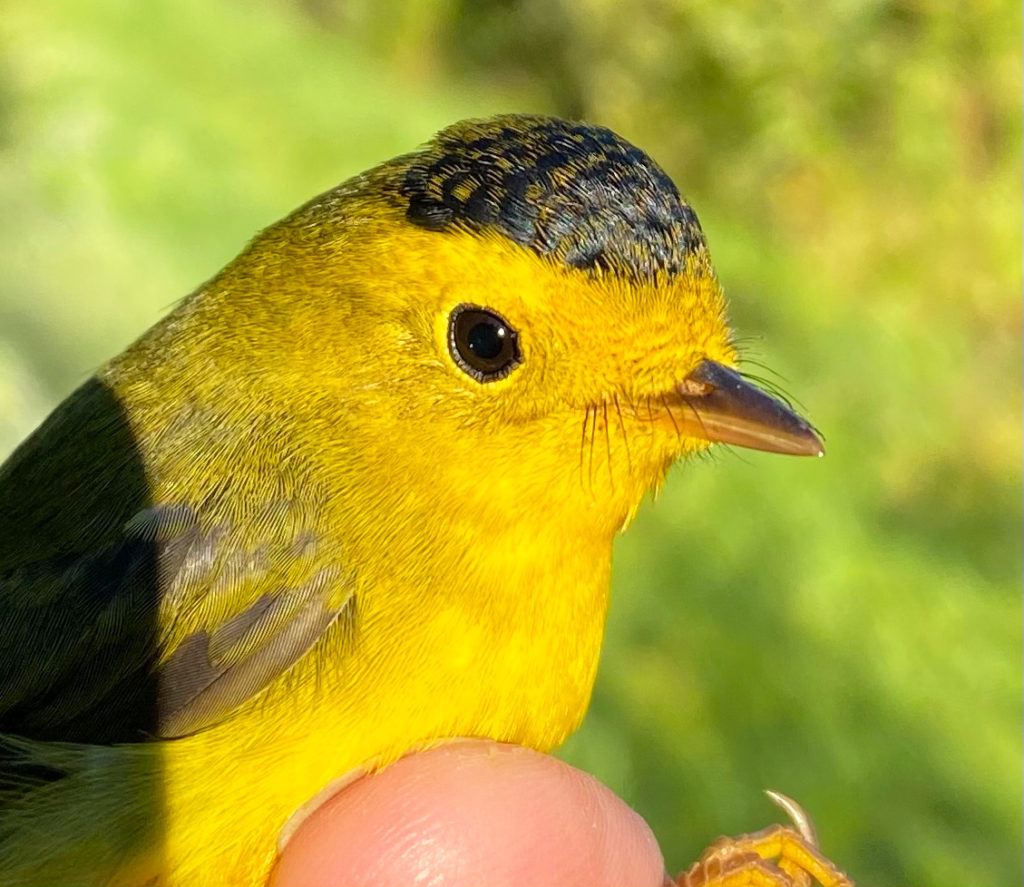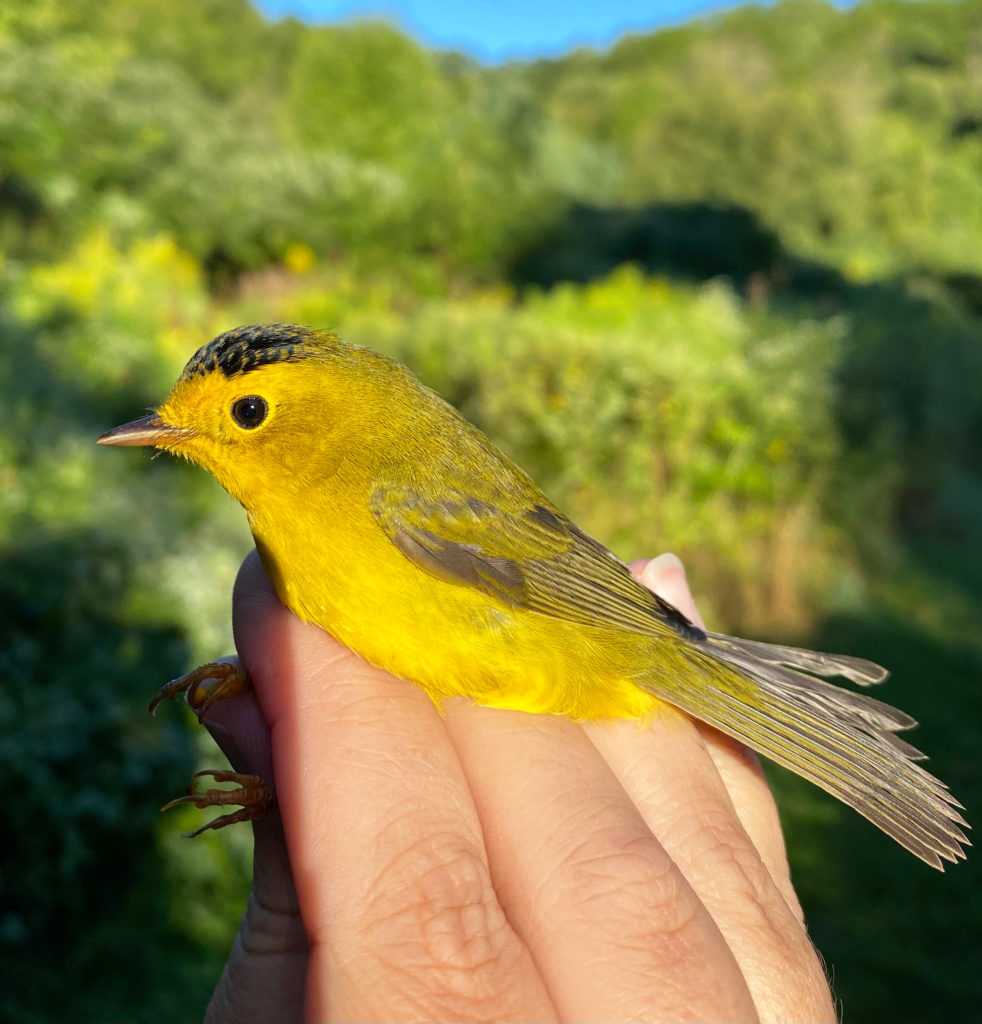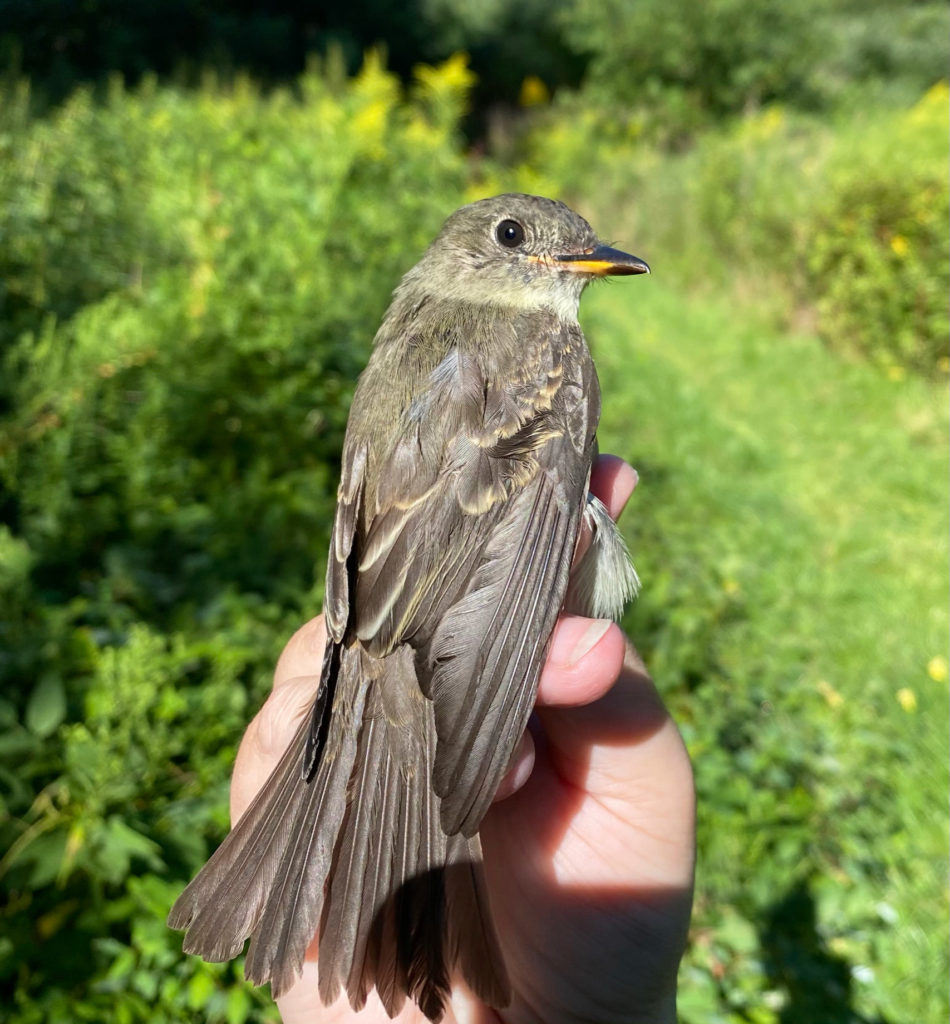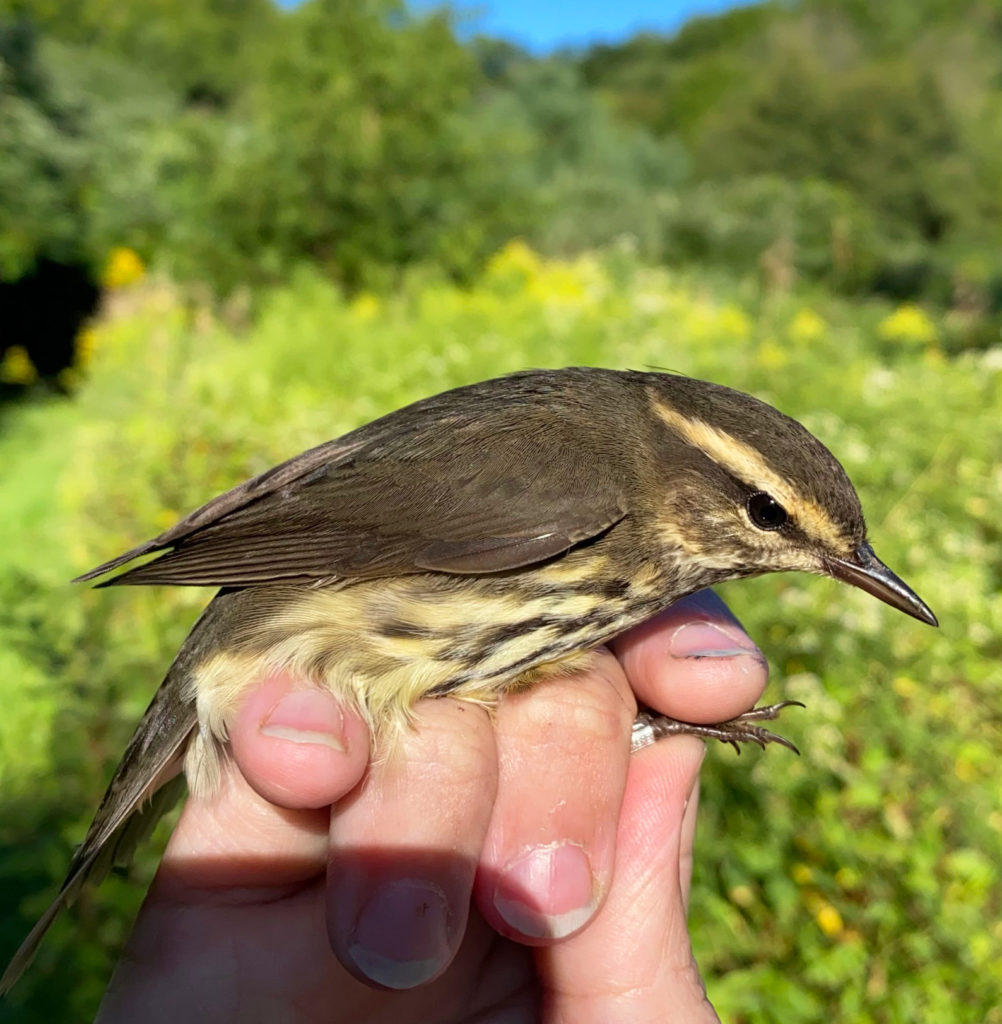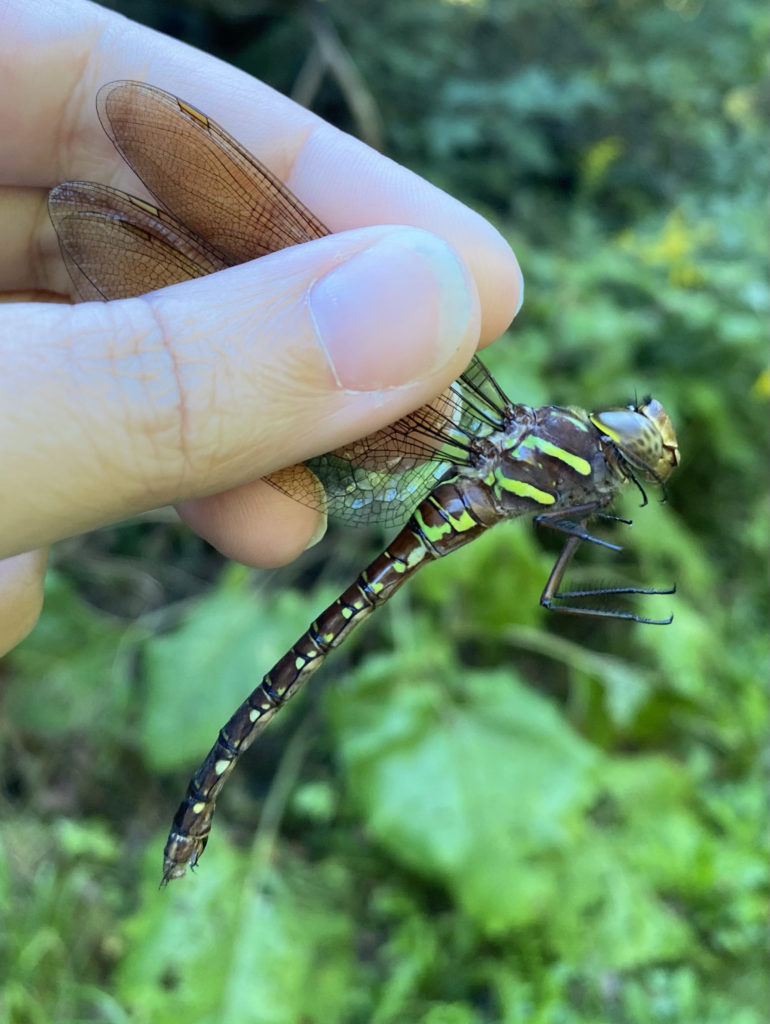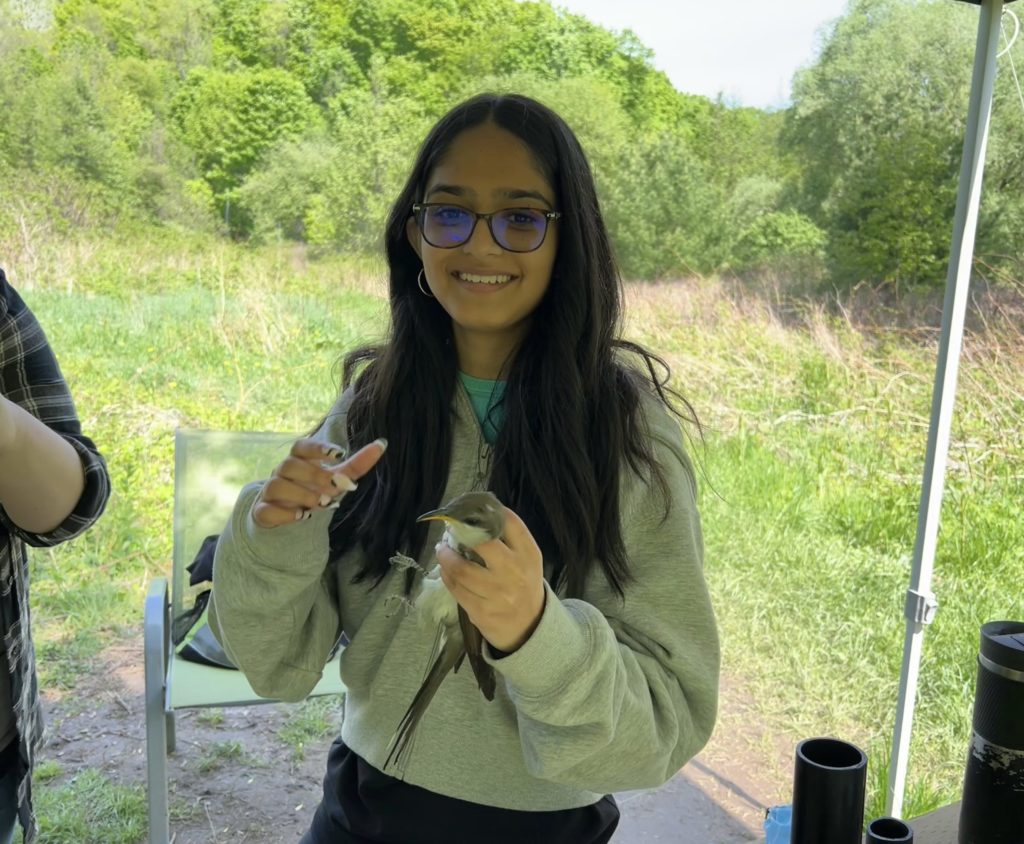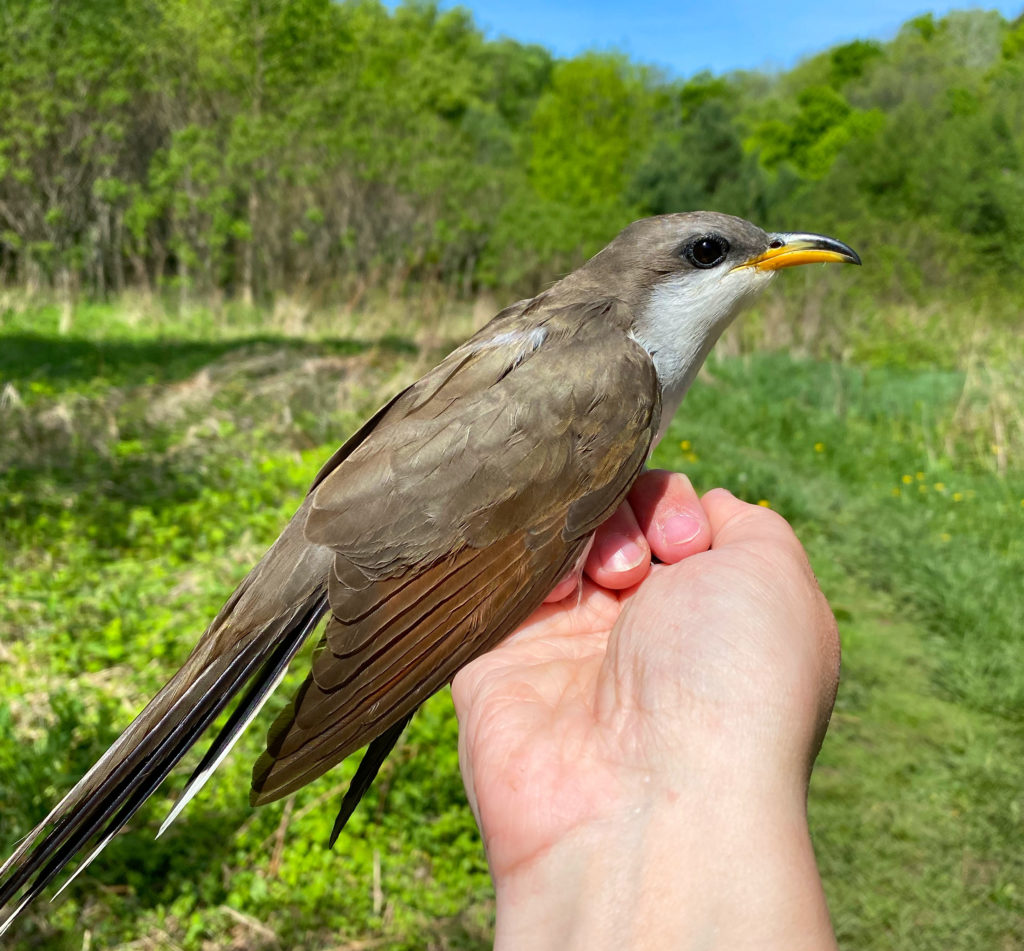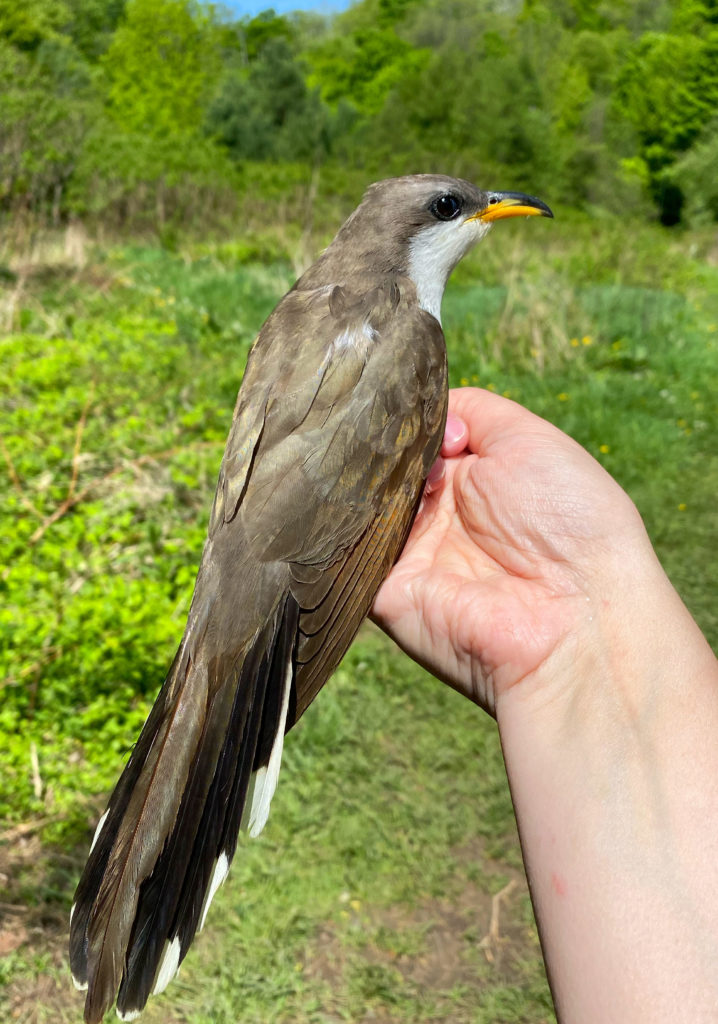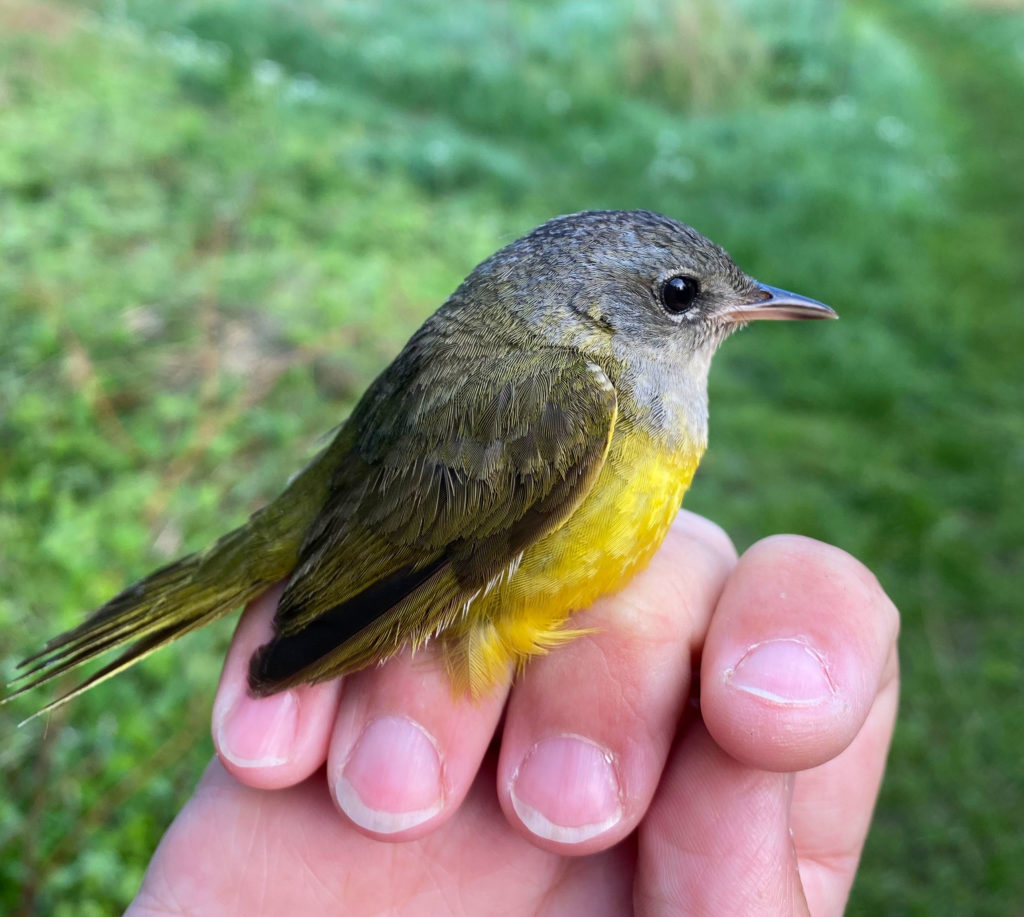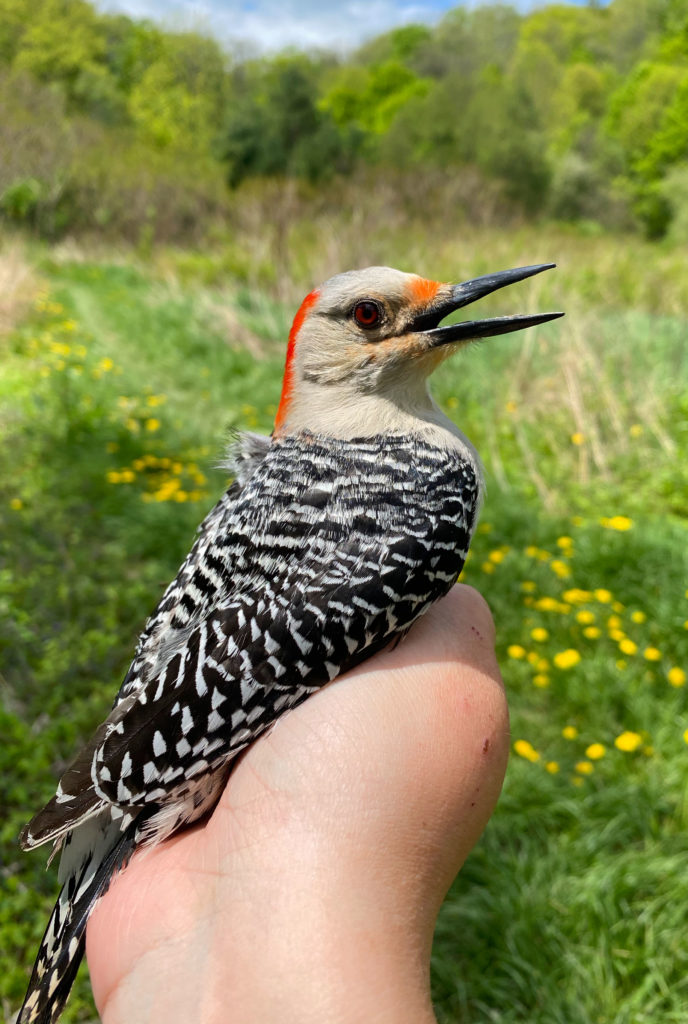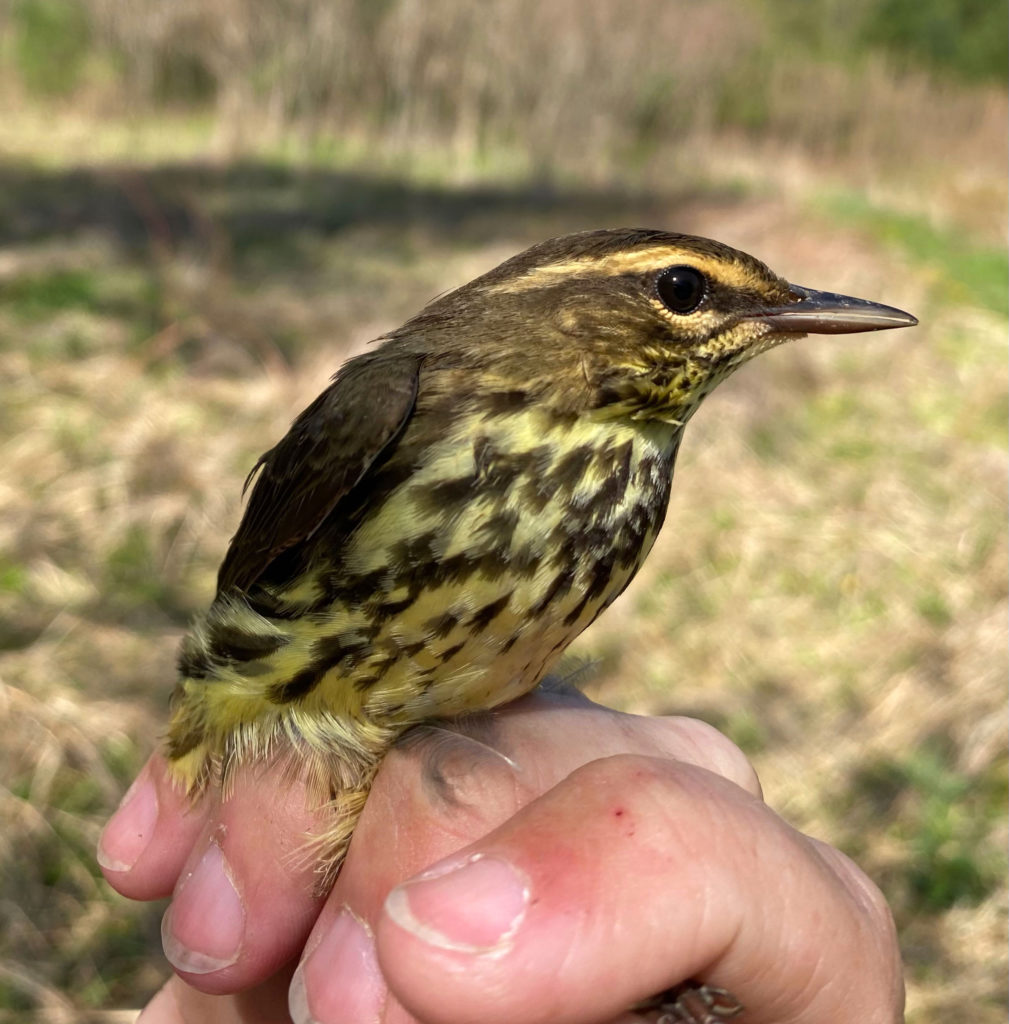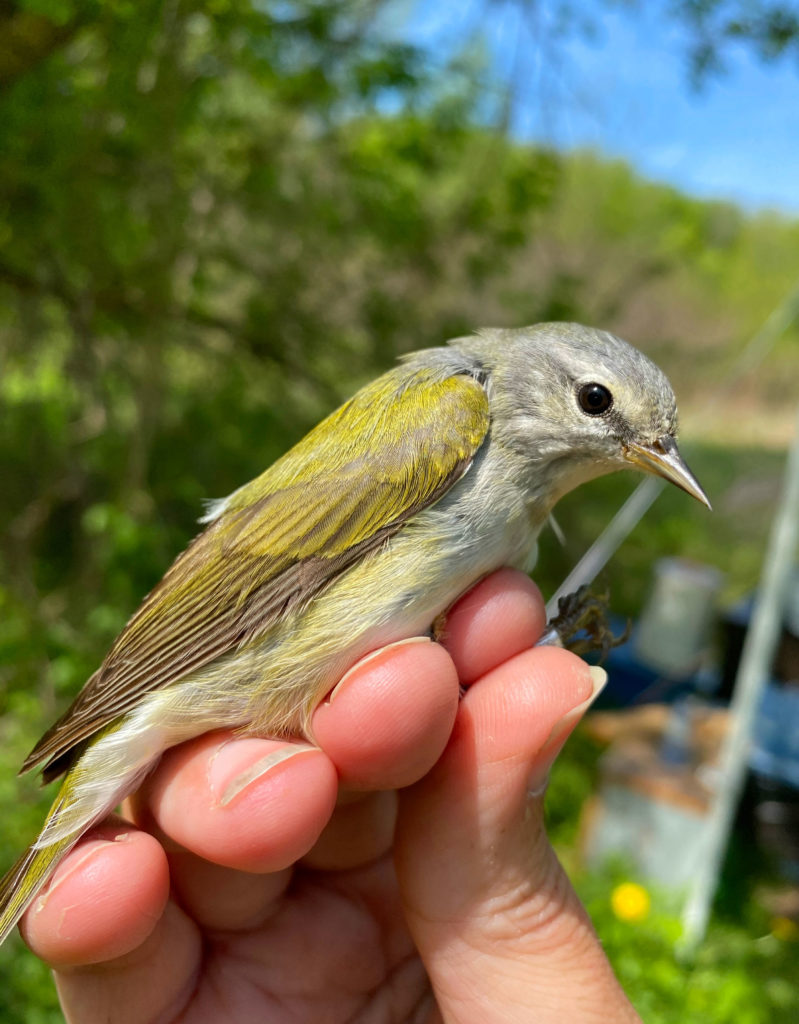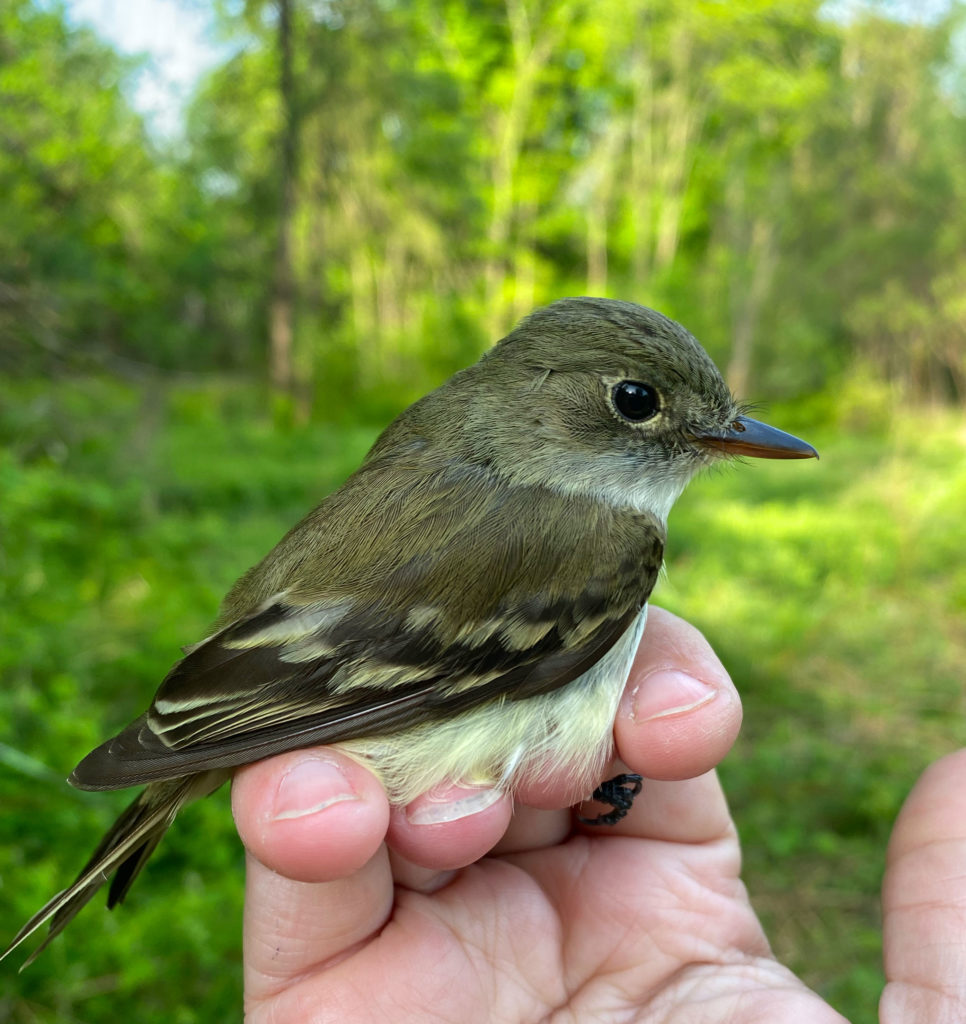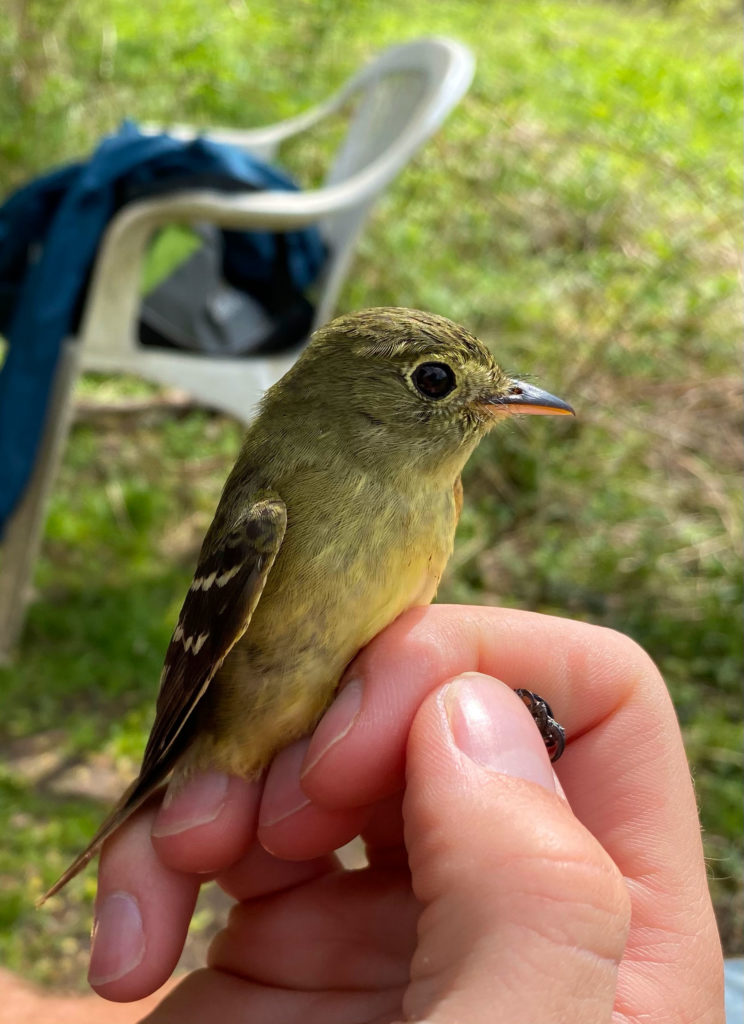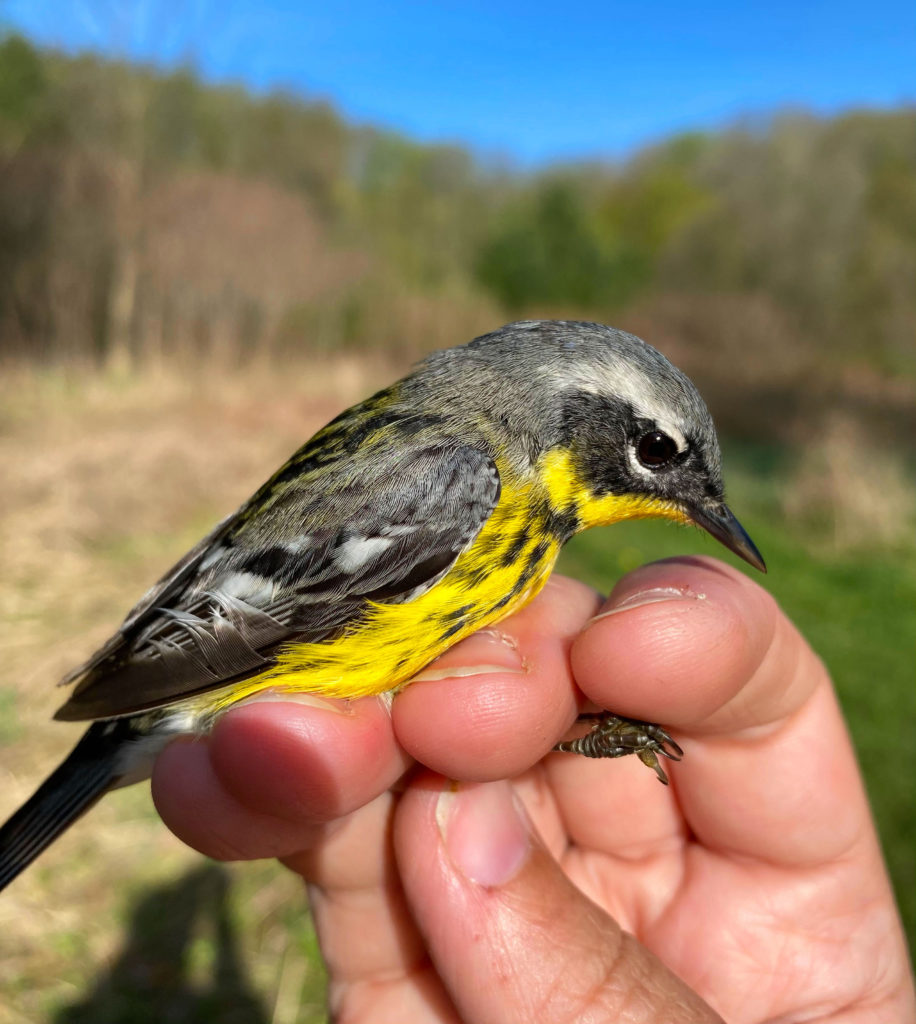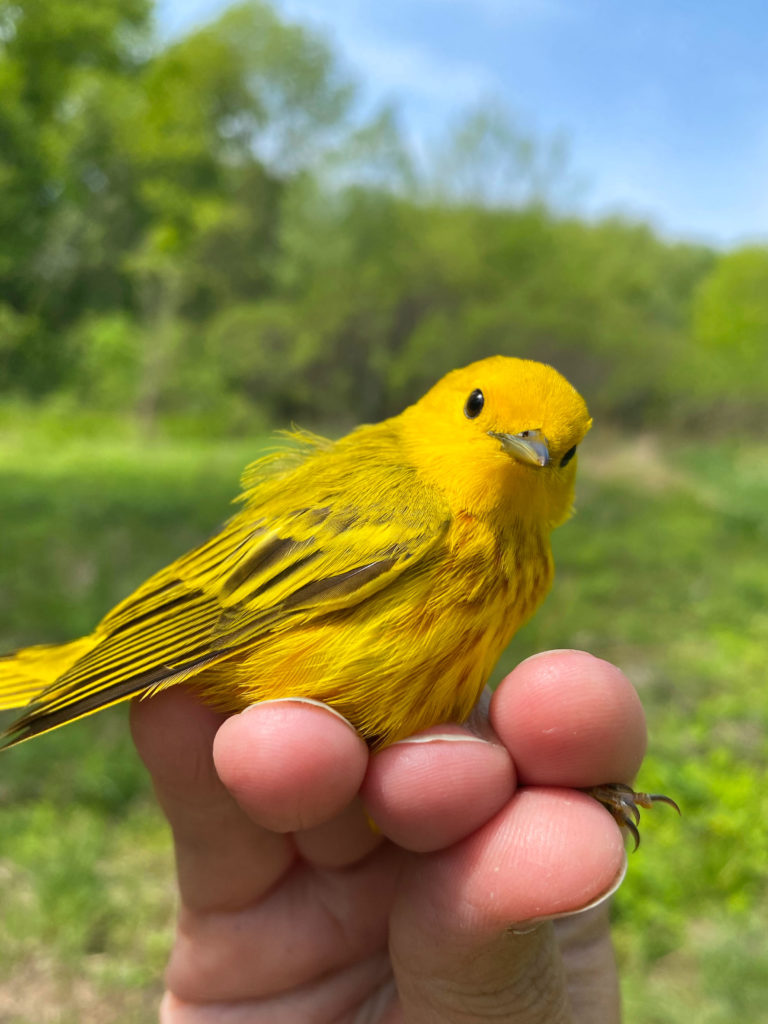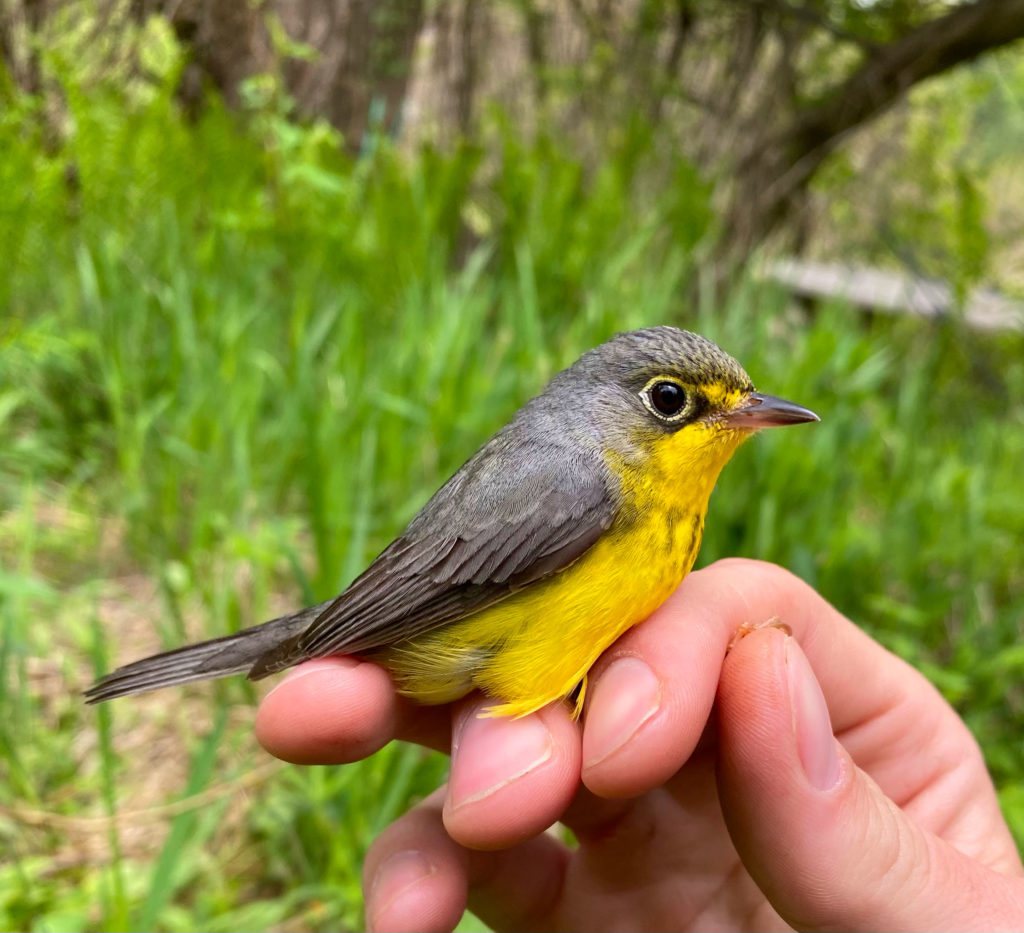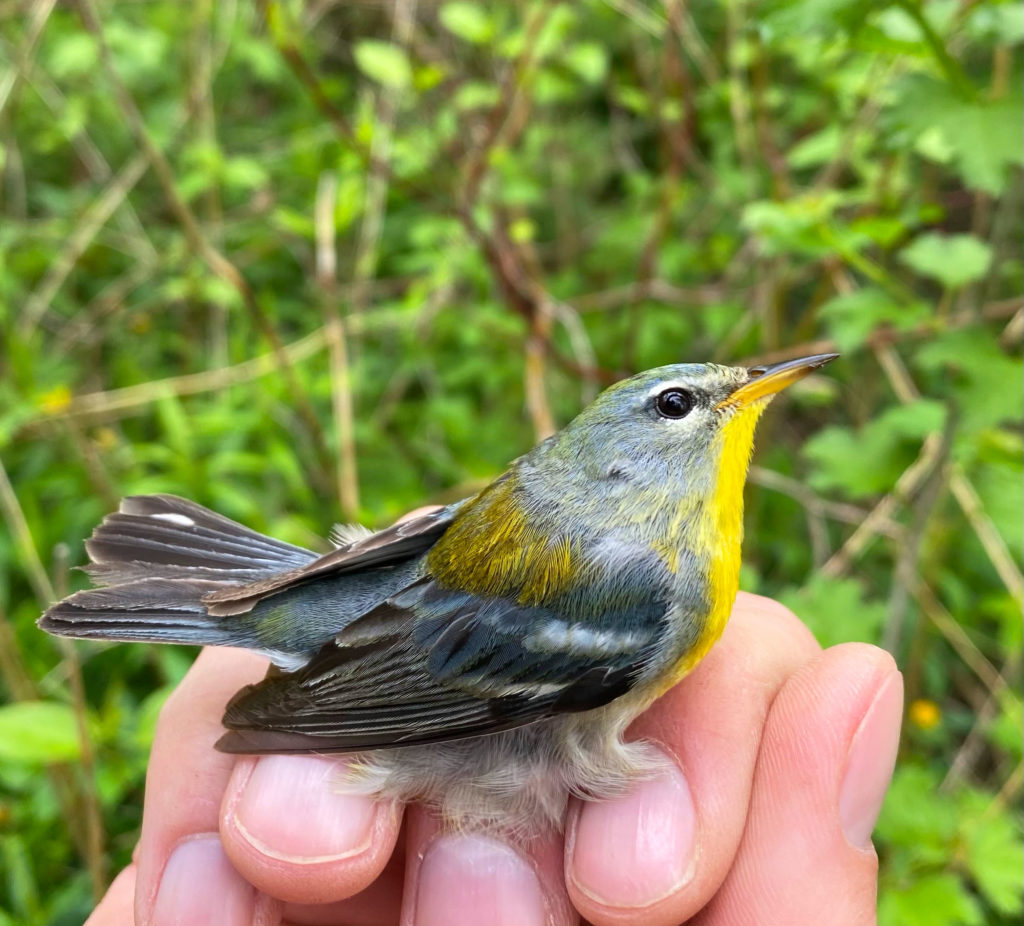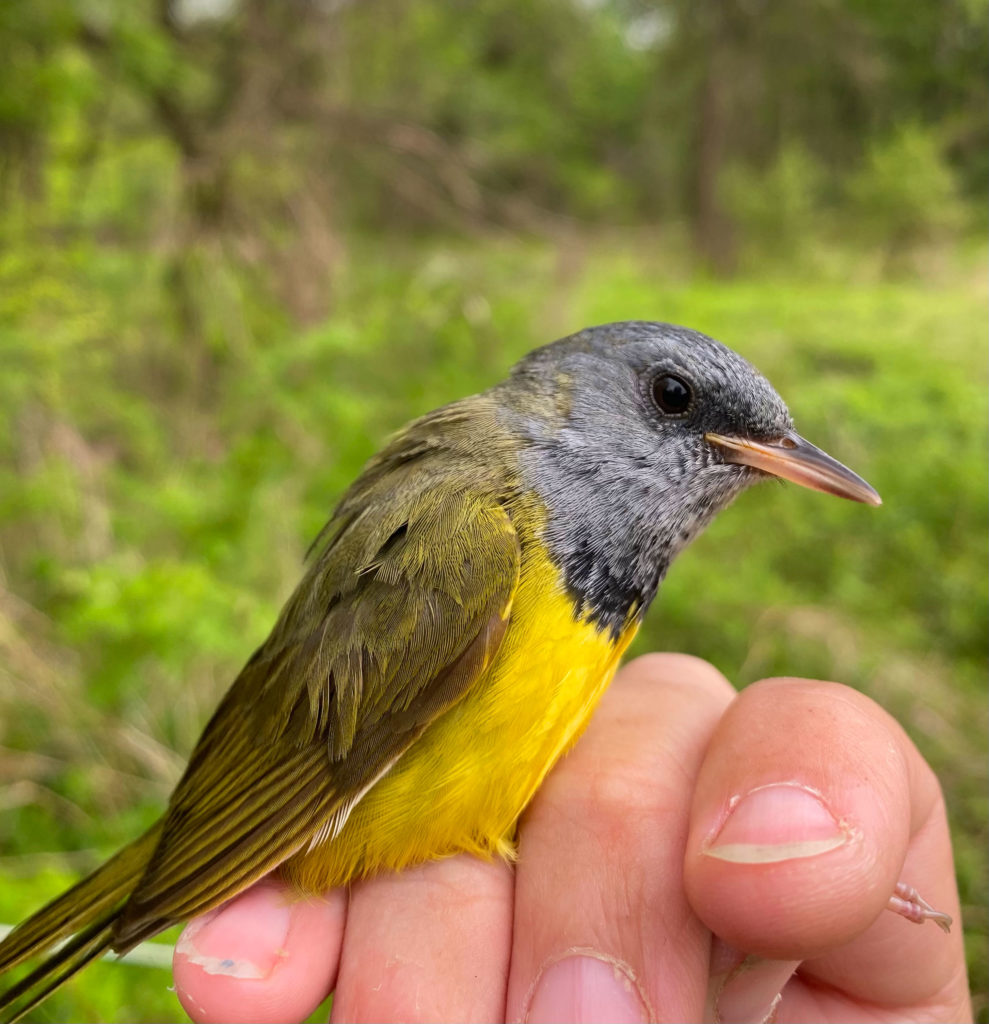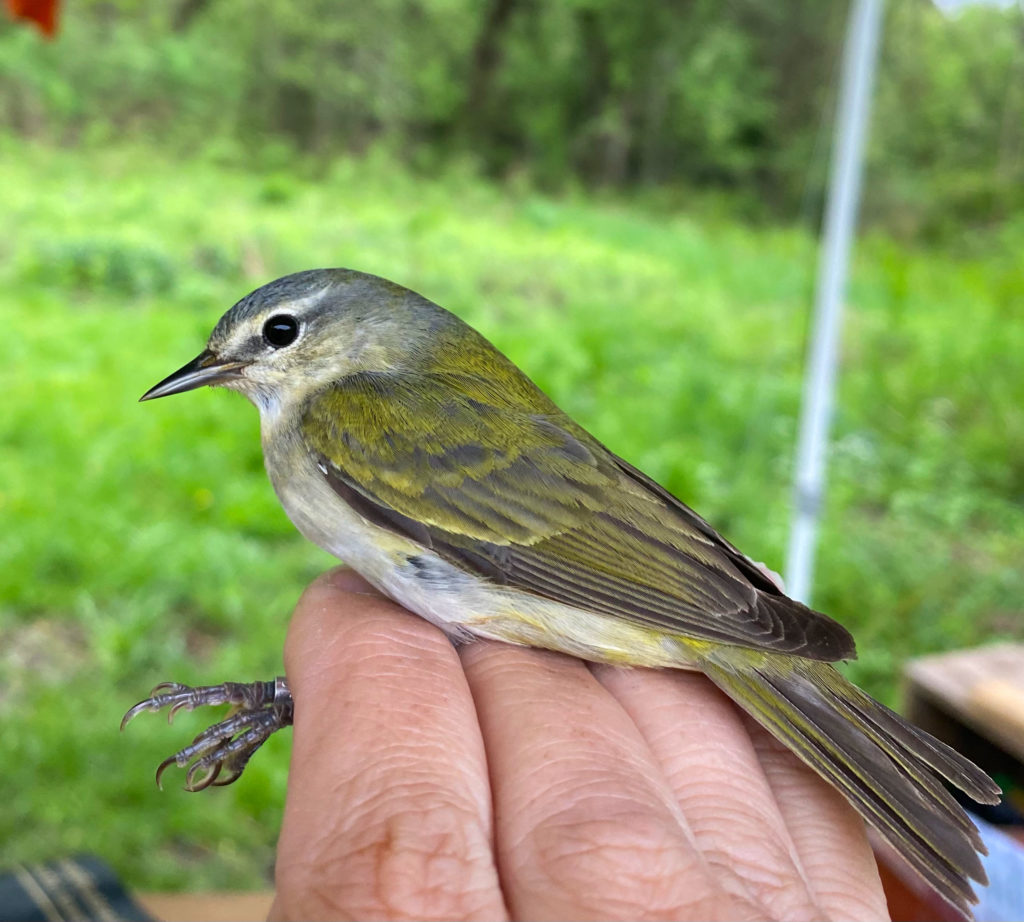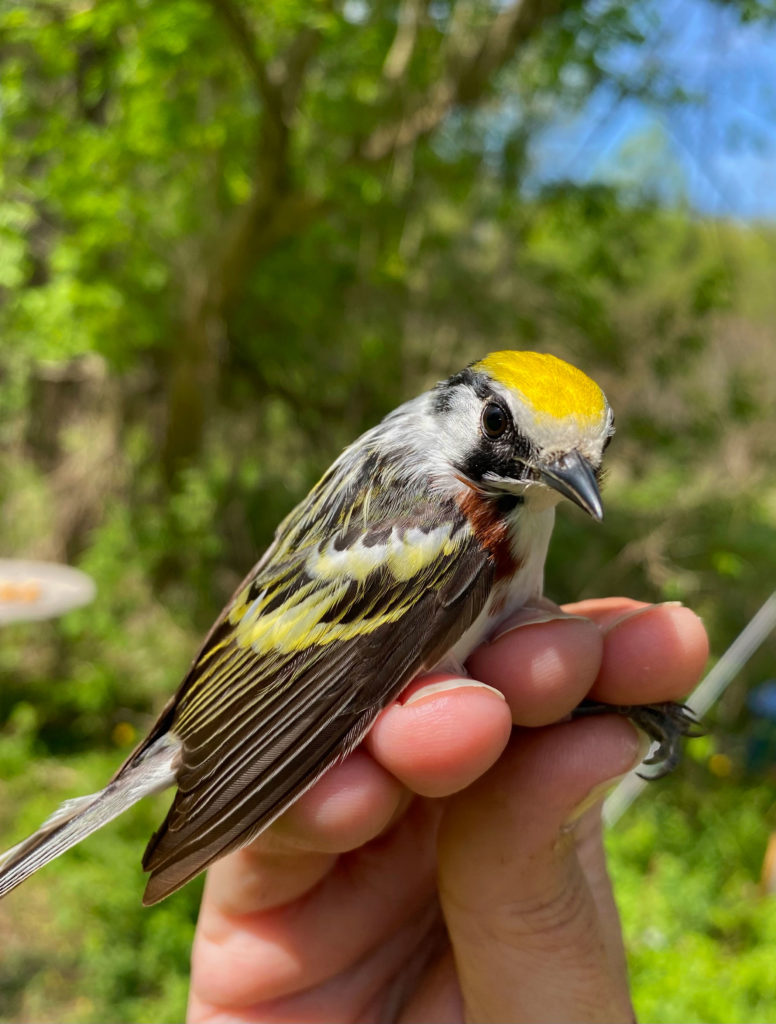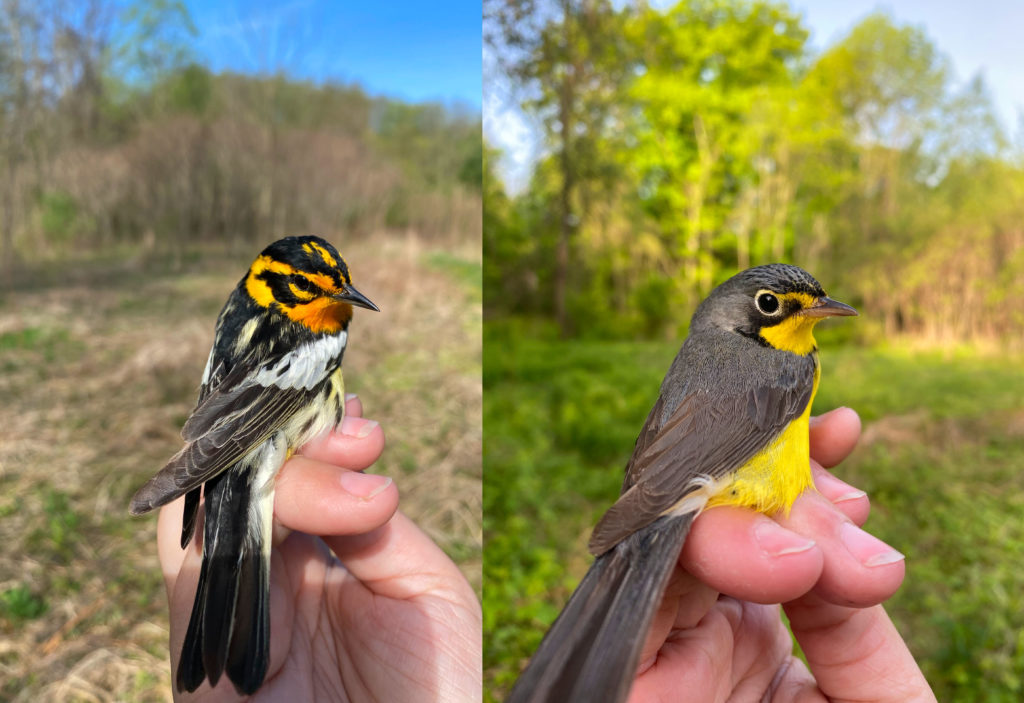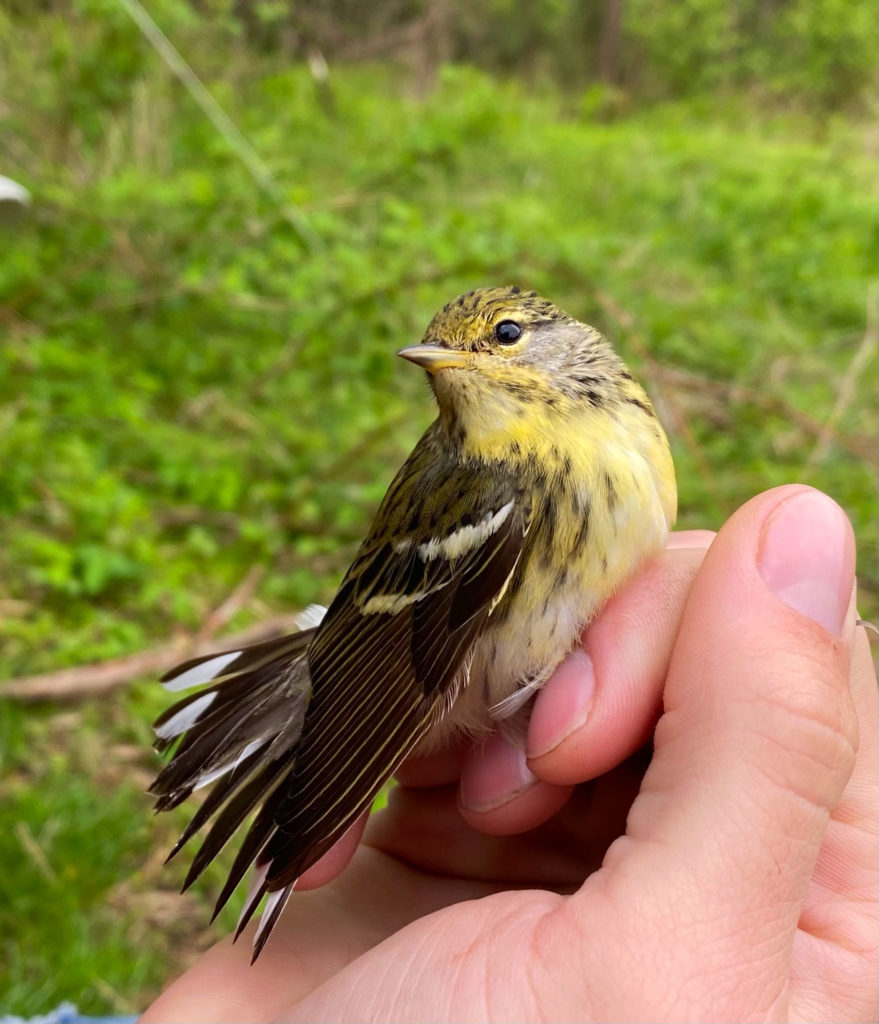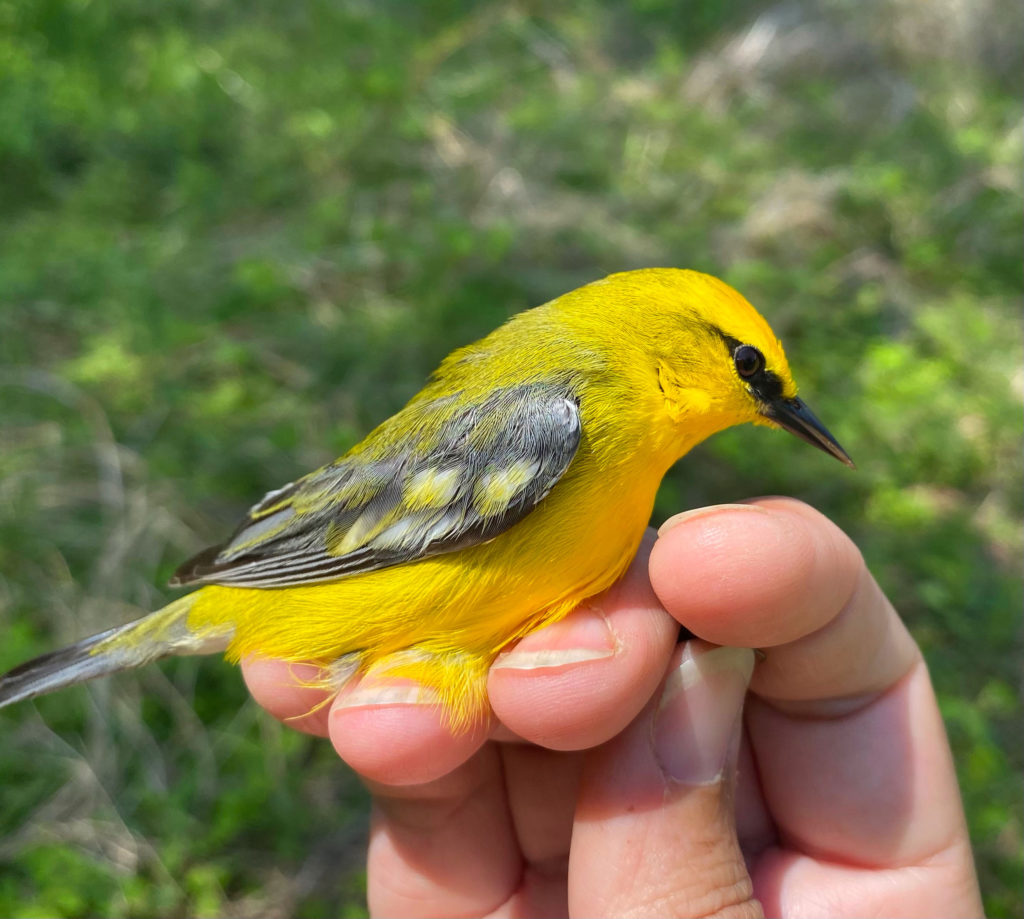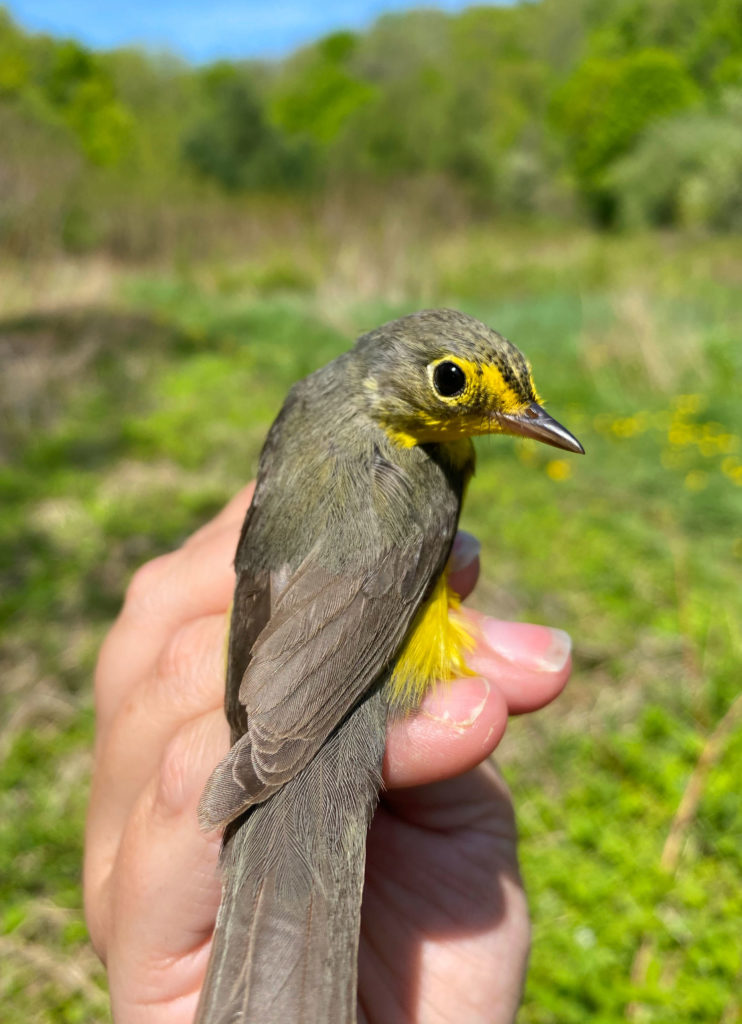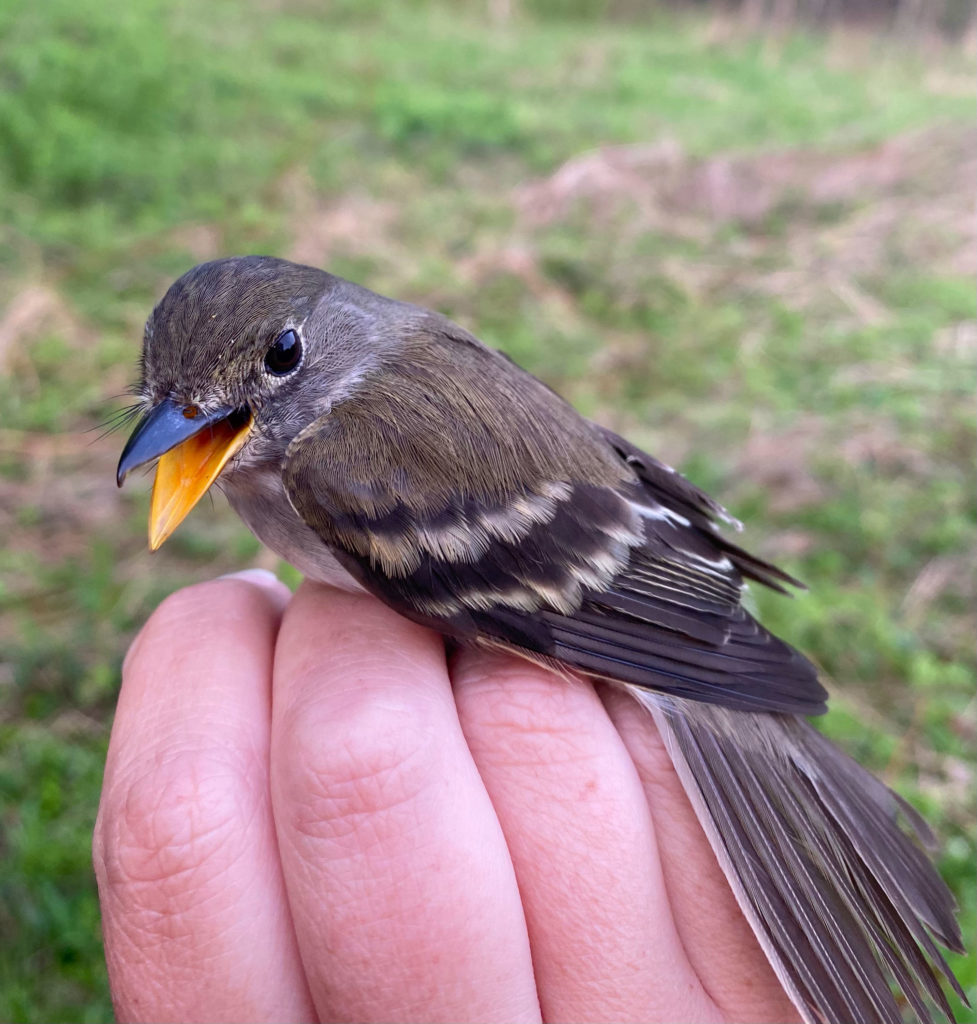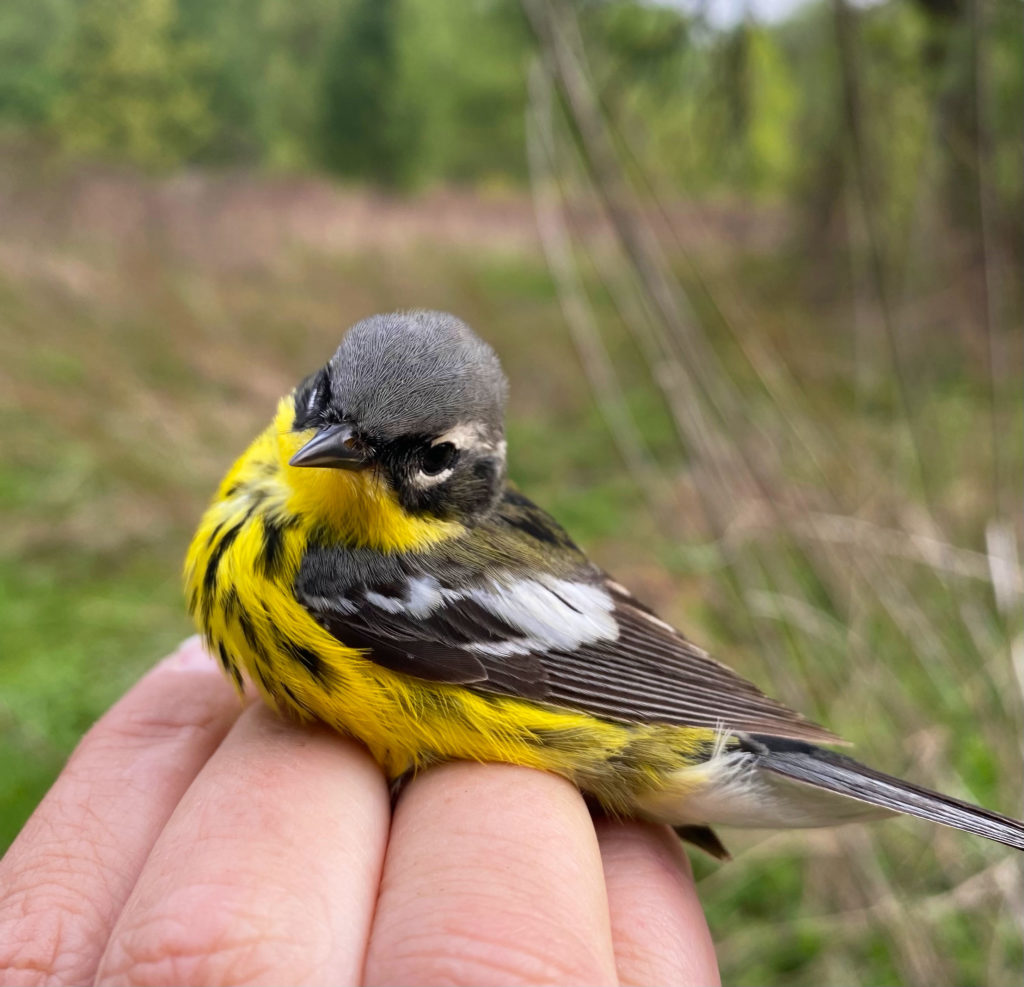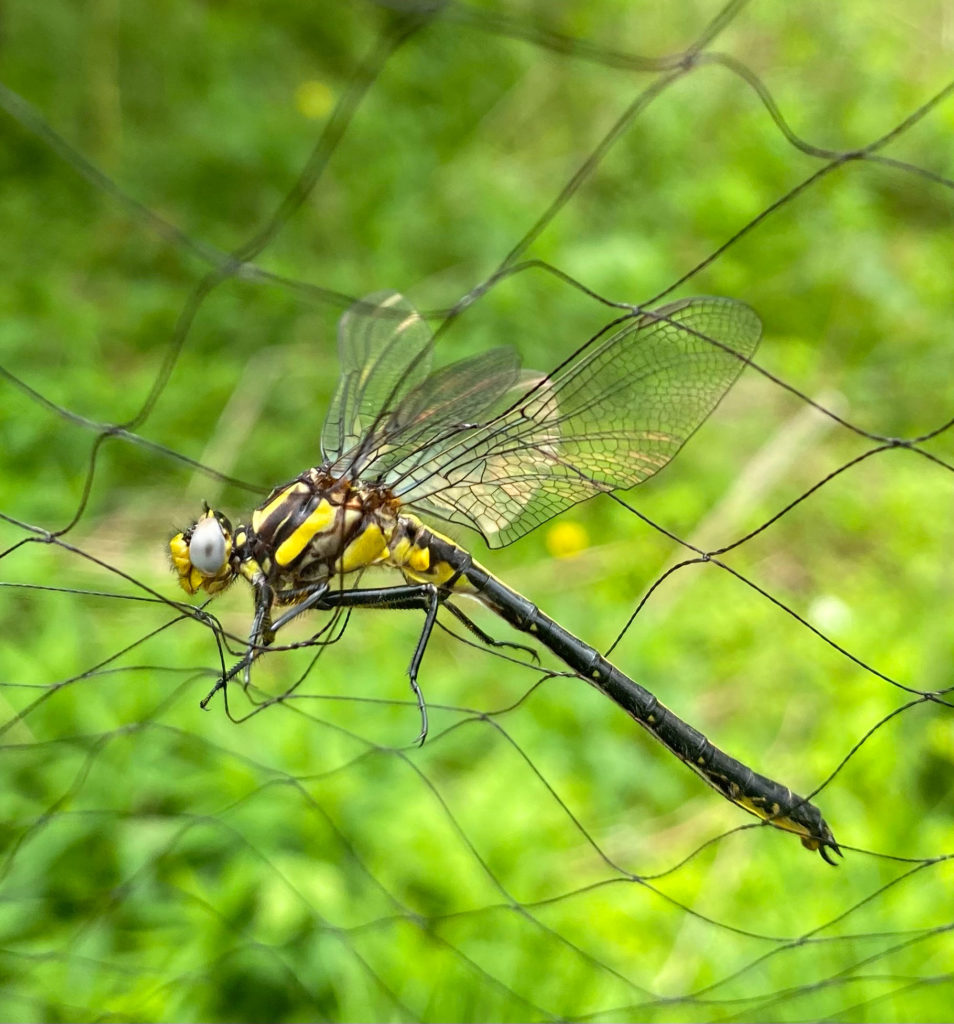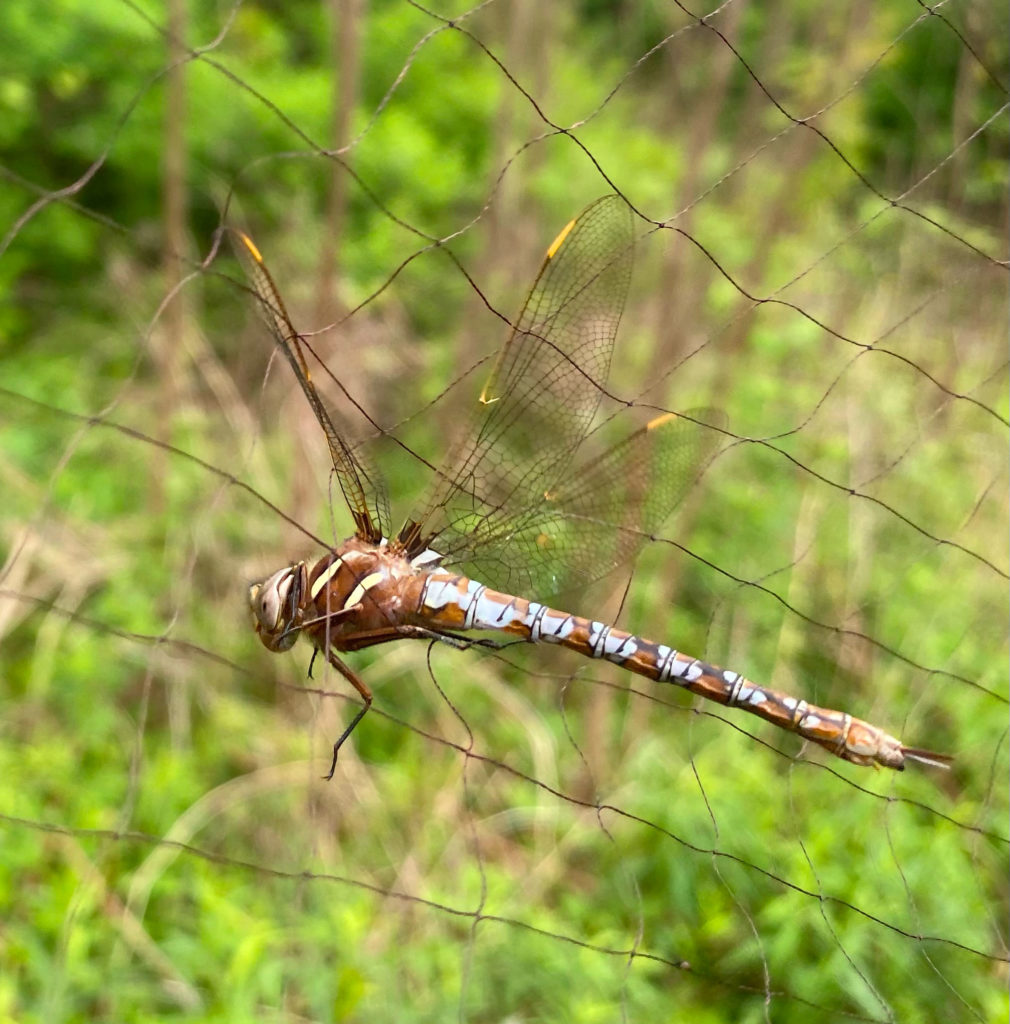by Catherine Manschot
Over the last few weeks, I have been coming out to the Lowville Banding Station as much as I can to prepare for the North American Banding Certification Program in mid-October. I want to take this opportunity to thank the two BICs, namely Ben Oldfield and David Brewer, as well as Sarah Sharp, for their continuing support in my training. However, I am writing you this article to share with you the surprise of capturing three Connecticut Warblers in the nets over the space of one week!
The Connecticut Warbler (CONW) is a shy and secretive wood-warbler that typically breeds in our boreal forests. It is in its very own genus, Oporornis agilis. This unique bird overwinters in South America and according to Birds of the World, there is little known about its distribution on its wintering grounds, or its summer grounds. In the Hamilton/Burlington area, the Connecticut Warbler is a transient spring and fall visitor. A sighting of this bird in our area is considered very special.
With the onset of better technology and birding networks, more birders have flocked to CONW sightings posted on discord, ebird, or other platforms. Nevertheless, sightings during migration remain low with typically one individual observed in the spring or fall by only one or two birders in the Hamilton and surrounding areas. Last year however, one was spotted at Bronte Bluffs and 16 birders had a good look at it, but due to this bird’s skulky nature, only one photo was captured and uploaded to ebird.
Even though the Connecticut is very hard to find or photograph in the field, we know they migrate through this area. Data from the Lowville Banding Station supports this assertion. Two CONW individuals were banded in 2021, one on May 22nd and another on Sept 15th. We also had one on May 24th in 2018. This year we banded three individuals, one each on Monday, Sept. 5th, Friday, Sept. 9th, and Sunday, Sept. 11th, 2022.
The CONW is somewhat similar in pattern to the Nashville, Mourning and MacGillivray’s Warblers but it is a larger bird. The CONW has a uniform yellow belly and vent and a full eye ring with occasionally a very small and abrupt break. The wing chord is between 63 and 75 mm. It has a relatively short tail and long, yellow undertail coverts. The combination of its larger size, eye ring, long wings, shortish tail with long, yellow undertail coverts will separate this bird from the other warbler species one might confuse it with.
Pyle explains that in the fall, the CONW HY female has an olive-brown forecrown and upper breast and the throat is buffy white, sometimes tinged yellow. The HY male forecrown and upper breast is brownish gray or slate gray, and the throat is pale white or pale slate. See the photos of the three birds below to see these differences. Sometimes the differences are too subtle to make a call on sex whereas in other cases it is more obvious.
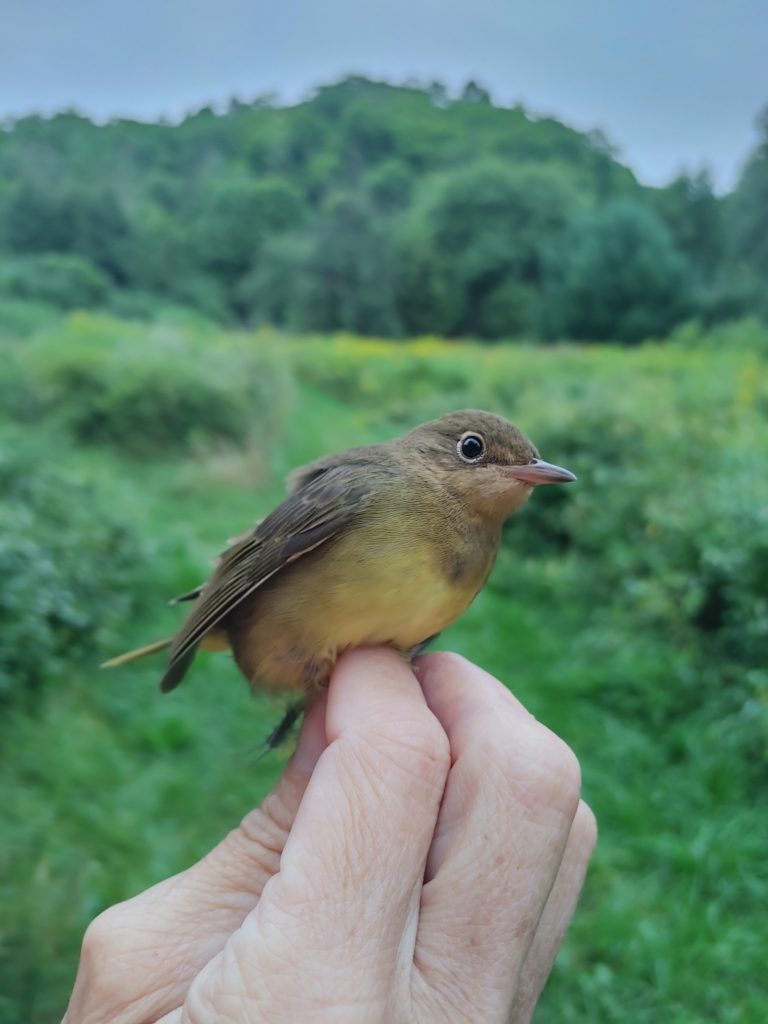
CONW, Sept 5, 2022, HY, Sex: 0 (probably female due to the absence of gray in the forecrown and breast) Wing Chord 69 Weight: 13.6
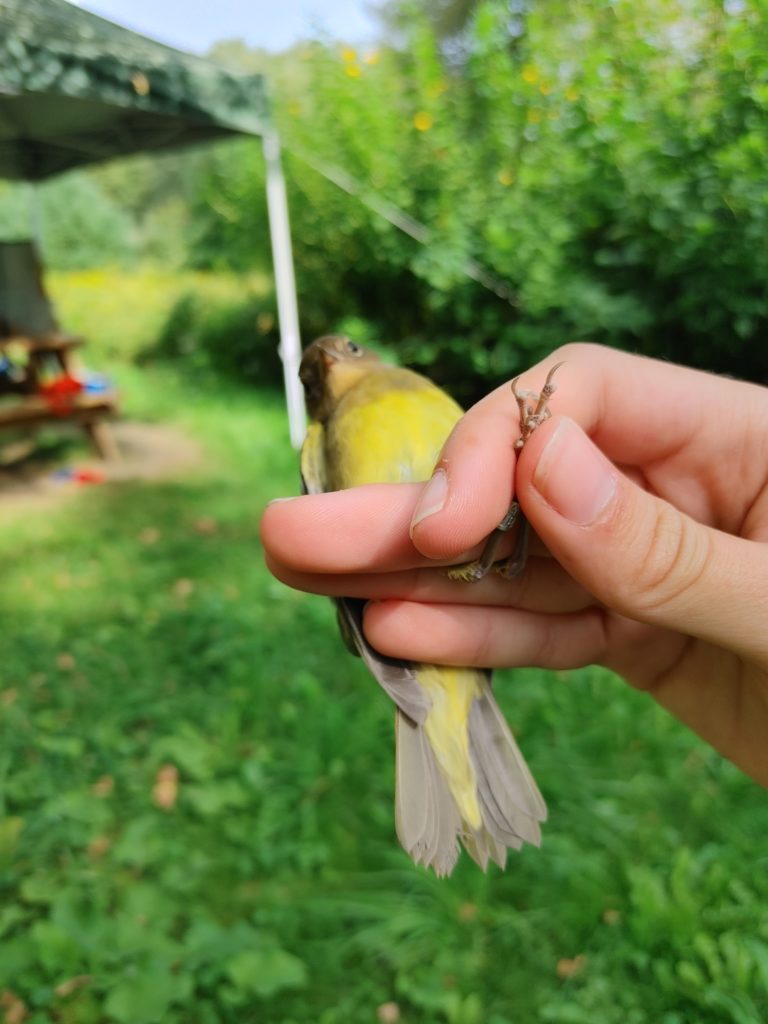
September 11, 2022 HY, Female (olive-brown forecrown and upper breast and yellow tinge on the throat) Wing Chord 70, Weight 14.3
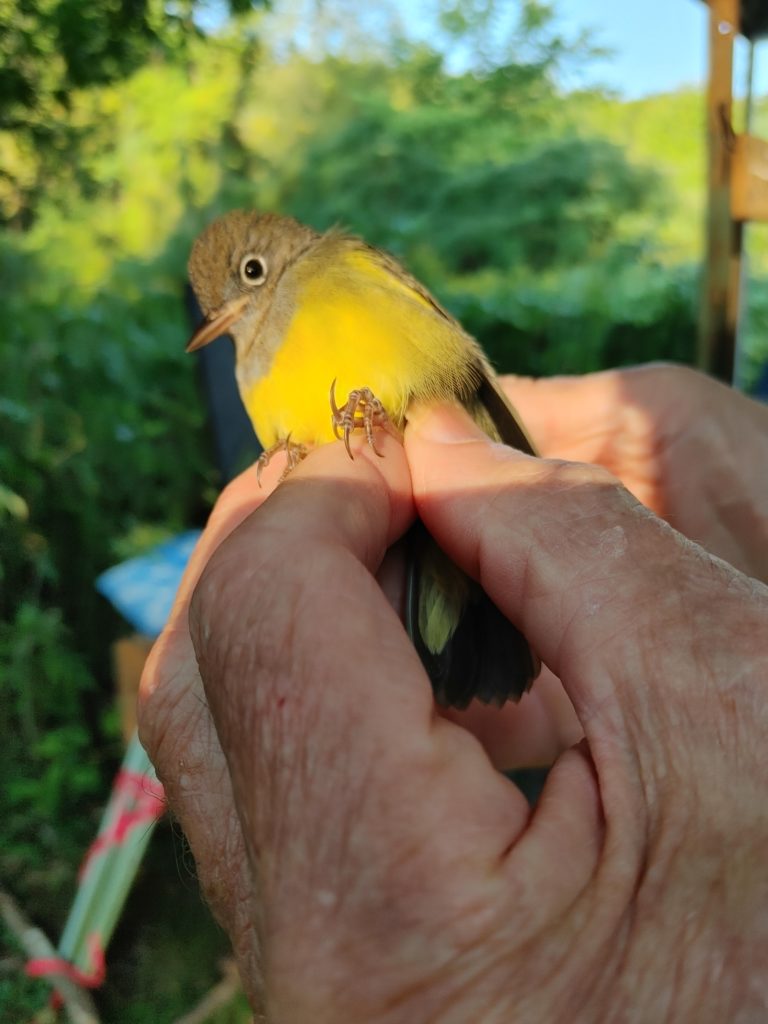
CONW, September 9th, 2022 HY, Male (gray brown in forecrown, gray in upper breast and pale in the throat) Wing Chord 70, Weight 14.2
It is interesting to note that on September 5th, 52 birds were banded covering 23 different species. On September 9th, 24 species were banded covering 18 species and on Sept. 11th, only 13 individuals were banded yet still included 10 different species. Our individual numbers are not typically high at the Lowville Station; we rarely break 100 in a season but nonetheless, the species diversity is impressive, and the incidence of less common species is notable. There have been other key species over the years that are worth noting. On May 15th, a Golden-winged Warbler, a White-eyed Vireo, and a Yellow-breasted Chat were banded! Also, on September 6, in 2020, one Hooded Warbler was banded.
The Lowville Banding Station is on private property and run by a small roster of volunteer master banders, banders with sub-permits, and banders-in-training. It currently runs approximately two to three days per week. Imagine what we might capture if this station could be running more often! I suspect we would find more diversity and perhaps even more Connecticut Warblers as well!
Catherine
———————————————————————————————————
